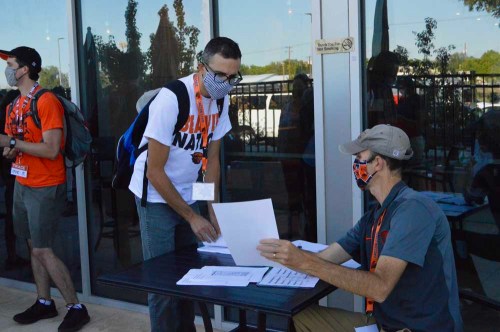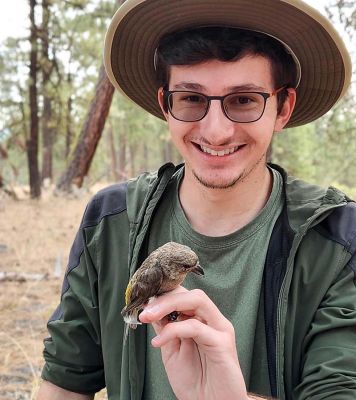New state modeling shows coronavirus spread leveling off in Oregon
Published 2:00 pm Friday, August 21, 2020

- Researchers with Oregon State University prepare for door-to-door COVID-19 testing in Hermiston on July 25-26, 2020.
SALEM — New modeling by state health officials suggests that transmission of COVID-19 has flatlined in Oregon and the number of daily infections will continue at about 900 a day, with about 250 of those cases formally diagnosed.
That’s a more optimistic forecast than a month ago, when public health officials were expecting “exponential growth” in the number of cases. But it’s generally consistent with modeling results from two weeks ago, which projected about 1,000 cases a day.
Trending
The virus reproduction rate is estimated at one infection for every new person diagnosed with the disease, which means infection rates have stabilized, but aren’t low enough to significantly reduce the number of new cases.
That could be problematic as counties look to reopen schools this fall.
To date, Oregon has reported 24,165 confirmed or presumed infections and 412 deaths, among the lowest totals in the nation. The seven-day average of new infections has declined in recent weeks from a high of 345 of July 30 to 295 on Thursday. Aug. 21. The state reported 301 new coronavirus cases and four deaths Aug. 21.
The modeling assumed that as of Aug. 13, a week ago, the state has had 104,800 cumulative infections to date, but only 23,200 had been diagnosed.
The disparity indicates that a majority of coronavirus cases are going undiagnosed because of asymptomatic cases, inaccurate test results and low test numbers amid a national shortage of testing supplies.
The state’s test positivity rate currently stands at 5.5%, above the 5% level in the governor’s school reopening guidelines, and still a sign of concern about community spread of the disease.
Trending
As with its previous modeling reports, the Oregon Health Authority looked at three different scenarios assuming different transmission rates for the next month, with this estimate beginning Aug. 14.
Assuming transmission rates continue at the current level, the model forecasts the number of new daily infections will remain steady at about 900, and the number of confirmed infections will remain relatively constant at 250. The model projects 130,800 cumulative infections by Sept. 10, and that the daily number of severe cases requiring hospitalization would also remain steady at approximately 19.
If transmission decreases by 10%, the model suggests that the number of new infections per day would drop to 300, with 11 severe cases a day and cumulative infections of 118,000 by Sept 10.
Alternatively, if transmission increases by 10%, the models shows 1,300 new infections per day, 29 severe cases and 148,400 cumulative infections by Sept. 10.
On Aug. 21, Brown added Jackson County to her “watchlist” of counties where COVID-19 is spreading quickly and when there are more than 50 cases per 100,000 residents that public health officials cannot trace back to a specific sources. She removed Wasco and Marion counties, which had been on the list since July 3 and July 30, respectively.
Counties remain on the watch list for a minimum of three weeks, with their reopening status frozen until their sporadic case rates drop below that benchmark. Brown did not say how the counties she moved on and off the list are faring against that benchmark, and the Oregon Health Authority does not provide those figures on its coronavirus dashboards. The watch list designation is supposed to ensure that the state prioritizes its resources for those counties, including increased monitoring and communication, case investigation and contact tracing help.
There are currently eight counties on the watchlist: Baker, Hood River, Jackson, Jefferson, Malheur, Morrow, Multnomah and Umatilla.
This article was originally published by the Oregonian/OregonLive, one of more than a dozen news organizations throughout the state sharing their coverage of the novel coronavirus outbreak to help inform Oregonians about this evolving heath issue.









